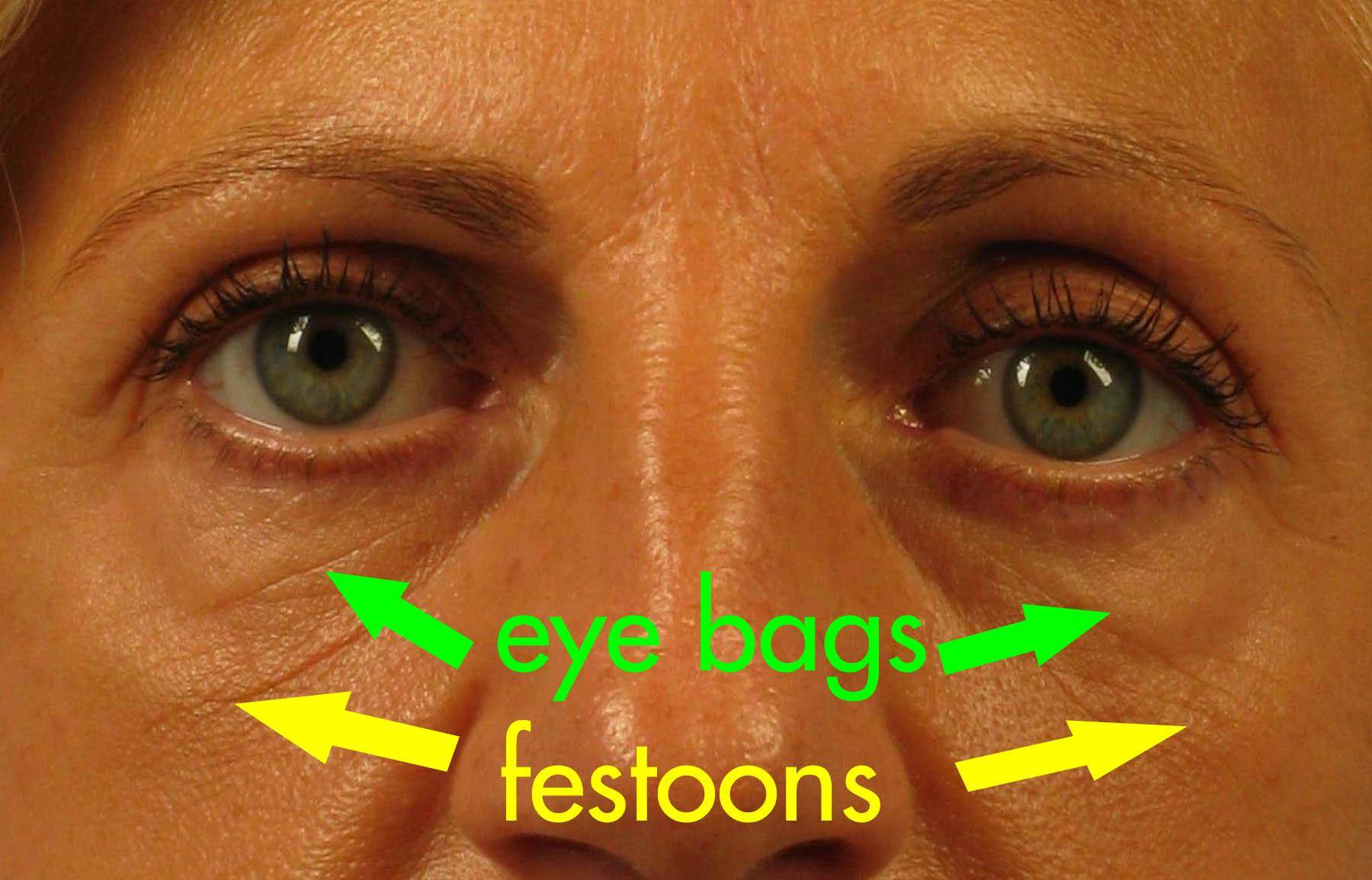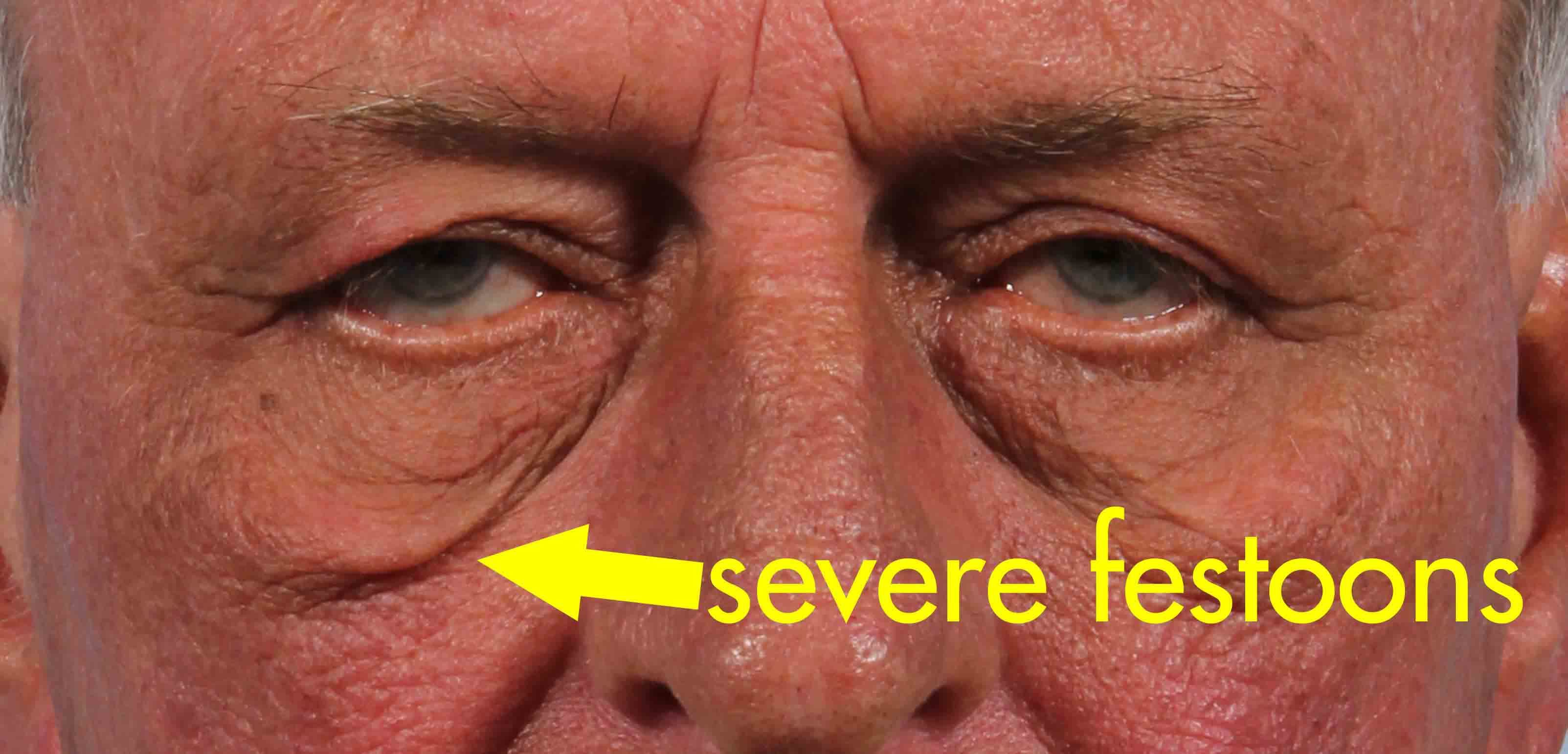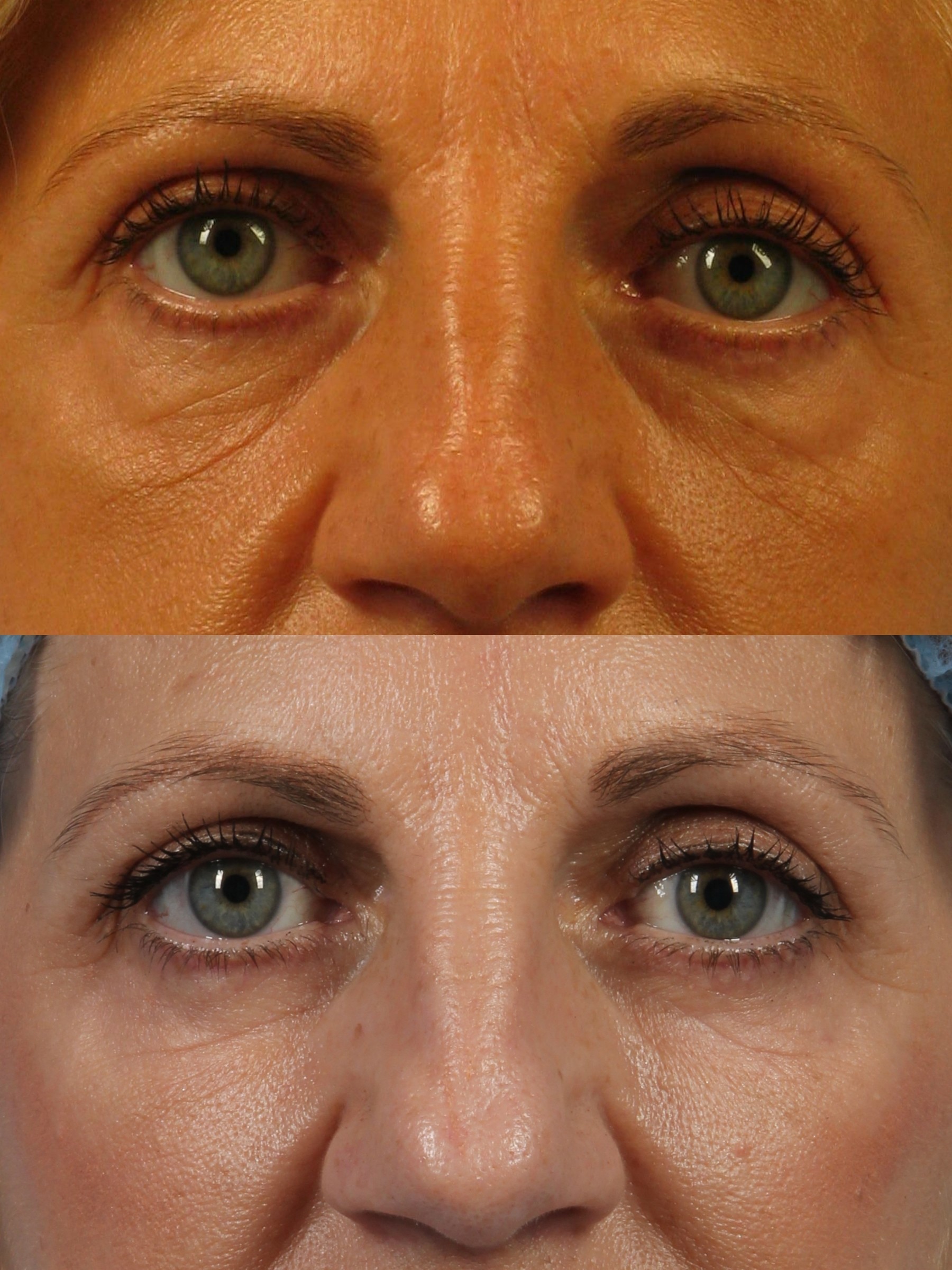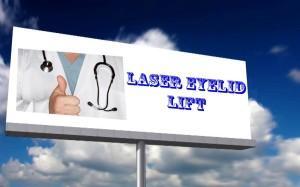What are festoons ?
Festoons, cheek bags, and malar mounds
These are all part of the same aesthetic problem. They are bags or bulges found on your upper cheek, below the eyelids and below the bony circle under your eyes called the orbital rim. They are seen in both young and old people, yet they tend to get worse with age.
Festoons and eye bags are not the same things
Eye bags are the puffy areas within the eyelids that are caused by bulging fat orbital fat pads, the fat that lives around the eyeballs. Festoons occur lower on the face, at the upper cheeks.
One side looks worse than the other- why?
It’s not uncommon for one cheek to look worse than the other. Facial asymmetry is noticeable in almost everyone, and festoons follow this rule. Here’s an example of a severe festoon on one side:
Why do we get cheek bags?
Festoons are caused by several conditions happening at once. The location of the folding skin and creasing is formed by the connective tissue bands that provide structural support between the skin, fat, muscle, and bones in your face. These bands or “ligaments” dictate the position of creases and folds on your face. With age, you may lose structural support and volume in your face. Volume loss combined with gravitational effects leads to aging signs such as jowls, sagging eyebrows and eyelids, and you guessed it, festoons.
Is there a correction for festoons?
Yes. Treatment involves a combination approach that addresses each of the underlying causes of the problem. Laser skin resurfacing, volume replacement (fat or filler injections), and lower eyelid lift surgery are often used to minimize or eliminate the festoon.
Here is an example of my patient who underwent lower eyelid surgery, fractional laser skin resurfacing, and fat injections to reduce both eye bags and festoons in a single procedure.
I routinely see clients who are concerned with festoons in my NY office and I’ve noticed that the festoon page on my website is one of the most frequently visited.
Brett Kotlus, M.D.
NY,
NY
10021
Phone: 212-882-1011




